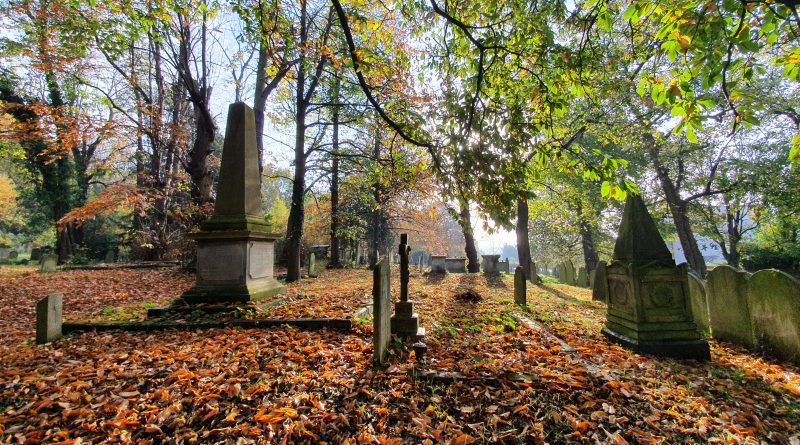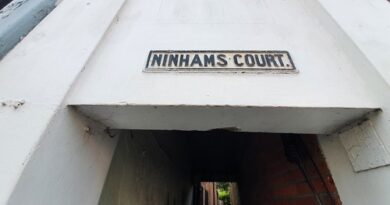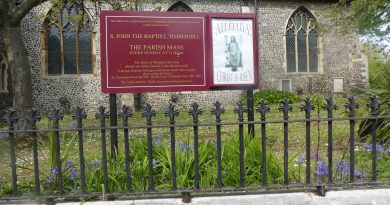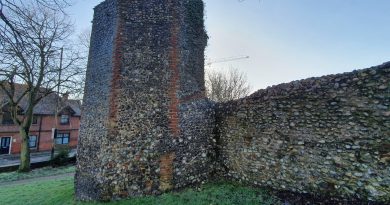Norwich – Rosary Cemetery (Amey Goldsworth + Edmund Goldsworth)
Since I’ve been grounded again by the Government, I thought I’d meander around the Rosary Cemetery located near to me in Norwich, in an attempt to see what stories lie there. It might not be the most fascinating blog content, but it’ll keep me quiet for a few weeks….
There are three names on this gravestone, that of Amey Goldsworth at the top (c.1822-1878), her husband Edmund (1819-1890) and their son Edmund (1846-1926). Edmund, son of Edmund and Susan, was baptised on 18 May 1819 in St. Mary in the Marsh church in Norwich, which is interesting as this parish church was pulled down some centuries ago. Instead, baptisms and the like took place in St. Luke’s Chapel within Norwich Cathedral (this is the chapel next to Edith Cavell’s grave site).
This name of Amey is rare, few children are called this, and it has been mis-spelt by numerous organisations during her lifetime and by transcribers since.
At the 1841 census, the family lived at Number 10, Granby Yard located on Bishopgate Street in Norwich. I can’t find this yard on the map, but it’s very likely that it’s the one next to the Marquis of Granby public house. This has long since been demolished and this yard probably lies underneath what is now Cotman Fields. At this time there were four in the family, Edmund Goldsworth and Amey Goldsworth, along with their 2-year old child Susanna and their new-born baby boy, also called Edmund. At this time, Edmund was working as a bricklayer and Amey was the housewife.
At the 1851 census, the family were still living at Granby Yard and Edmund was still a bricklayer. He had been a little busy though during the intervening years, since he now had a 2-year old son Frederic and a new-born baby girl, called Sarah, as well as his older two children who were still at school.
I can’t find the older Edmund or Amey listed in the 1861 or 1871 censuses, which isn’t ideal…. But Edmund, the elder, was certainly doing OK for himself financially, he was listed as being a freeholder from 1863, which entitled him to vote in elections. The younger Edmund married Ann Maria Elliott on 27 December 1869, at St. Peter Parmentergate Church, which is now sadly redundant although work is in hand to get tenants.
In 1864, Edmund was in court (there will be a theme of this) when Frederick Hall, a butcher on King Street, summoned him to court complaining that Edmund had threatened to “smash him up”. It transpired there was a dispute between Hall and Edmund about the bricklaying work which he had done for the shopkeeper. He was found guilty and Edmund had to provides two sureties of £10 and £5 to keep the peace for three months.
There was a strange case in May 1868, when the older Edmund accused William Tooley, a waterman of Bishopgate Street, of stealing his property. The case was dismissed when the magistrates decided that Tooley owned the items in question.
The older Edmund managed to find himself in court again in May 1877, summoned to attend by John Mackley jnr of Barrack Street. Edmund was found guilty of abusing and threatening behaviour, but it seems to have been a family affair, as the younger Edmund was found guilty of the same crime against Mackley. The older Edmund was ordered to find sureties and keep the peace for six months, whilst the younger Edmund was fined £1 with costs of 18s 6d. Amey died the year after, in 1878, I’m not sure what she would have thought about the behaviour of her husband and son, although I get the impression that she was used to it.
Family arguments continued here though, when Edmund the younger was summoned to court by his sister-in-law, Sarah, who was married to Frederic, for physical assault. By all accounts, it looks like the older Edmund pulled his son away from the incident, with the younger Edmund hitting his head when falling. The younger Edmund was fined 1 shilling for his behaviour and promised that he would be well behaved.
Trouble continued though with the younger Edmund, but in 1882, it was him who summoned a Richard Mackley to court for an unlawful assault. Edmund said that he want to Mackley’s garden to retrieve some gardening implements, but the defendant refused to give them to him and instead hit Edmund and knocked him down. After hearing evidence, the case was dismissed as there was some confusion about whether Edmund had any right to take the implements that he wanted.
Not that this debacle finished here, in 1897, the younger Edmund was assaulted again, this time he summoned a special constable to court, a man called John Watson. Frederic, who was Edmund’s brother, and Edmund testified that he had done nothing wrong and that Watson had shown aggression. In this case, Watson was found guilty, but the magistrates said that he had faced a lot of provocation from Edmund. Next to be heard in the court was Edmund, who had been summoned by John Watson for using threatening language. This case was ultimately dismissed, as was a separate case made against Edmund.
I would say, if not being rude, that there’s a pattern of behaviour taking place here that wouldn’t seem out of place on Jeremy Kyle. Bishopgate is today a serene and peaceful street, goodness knows what it was like in the late nineteenth century with all this going on.
The older Edmund is listed in the 1881 census and is listed as living at the Goldsworths Building on Bishopgate. This is rather appropriate in terms of his surname, although I’m unsure of whether there’s any link in terms of the name. He’s listed as still working as a bricklayer, now living alone and it’s mentioned on the census that he’s a widower.
I didn’t expect this gravestone to tell quite the story of crime and drunken behaviour that it has, although I was disappointed not to find out as much about Amey as I would have liked. I wonder whether she was supportive of her husband and his issues, or whether she was annoyed at his drunken behaviour.






